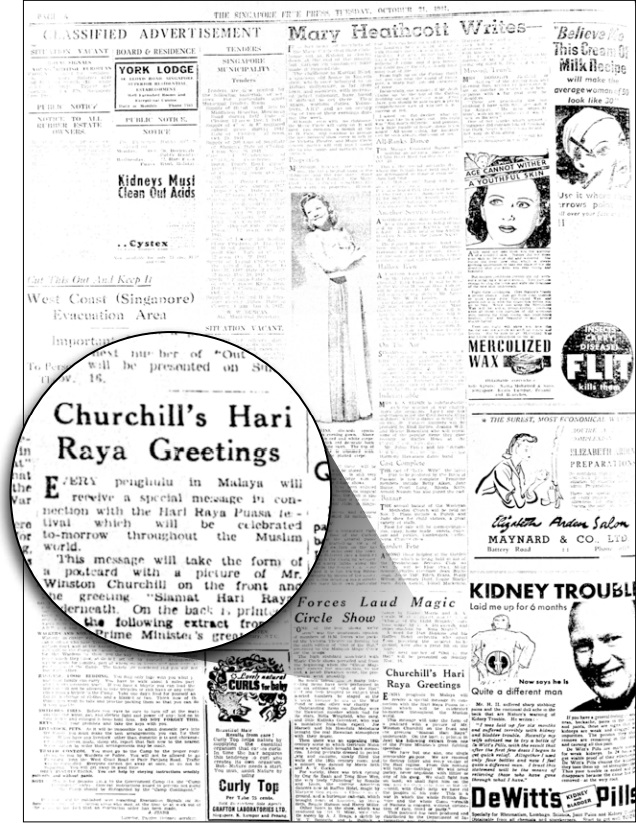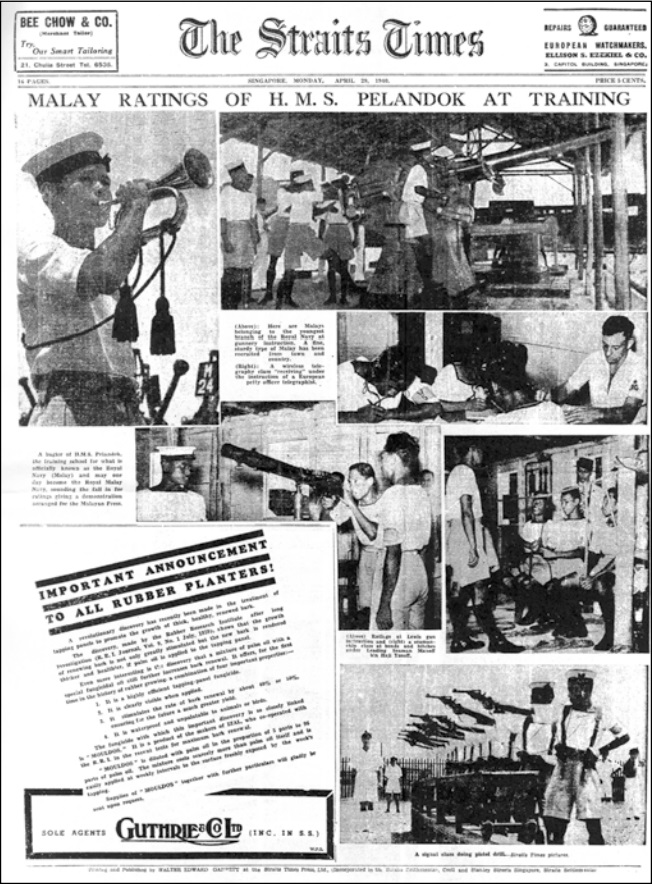This is the fourth of seven articles on Hari Raya and Malay Culture appearing in the July/August 2014 issue of PASSAGE, the magazine of the Friends of the Museum (FOM).
The Malays of Singapore began the fasting month on 3 October 1940. The fasting on the first day ended with the firing of the gun on Pulau Brani at sunset. Hearing this, all mosques beat the ‘tom-tom’ to signal the end of fasting for the day. The end of the fasting month came on 1 November 1940 with the spotting of the moon in Johore. News was sent to Singapore and the Malay community and by 2:30 am, Muslims in Geylang and the outlying villages knew of the occurrence. The celebrations began and the streets of Singapore became very festive. The report mentioned that Malay men, women and children wore their “best and most colourful clothes”. They waited for buses and taxis or sat in rickshaws to go to the houses of friends and relatives. It seems such celebrations are not too different from those of today except for the firing of the gun on Pulau Brani and rickshaw rides.
In these reports there was little to indicate that there was a war going on, but the British certainly made an attempt to tell the Malays in Singapore to not celebrate excessively. This can be seen in the article published in The Singapore Free Press and Mercantile Advertiser (1884-1942) on 2 November 1940 entitled “We Shall Celebrate Hari Raya of peace soon – Says O.A.G in Malay Broadcast”. Mr S W Jones, the officer administering the government, in a Hari Raya message broadcast in Malay from Singapore said that he wished the Malays throughout the town and kampongs happiness and contentment during the celebrations. However, the Malays were told to plant foodstuffs such as vegetables, fruit trees and rice and avoid “extravagance” in private and public celebrations.
I wonder how many Malays in Singapore had any forebodings about what was to come. Probably not many considering that they celebrated Hari Raya in 1940s Singapore with much gusto and a complete lack of fear. Why was this so? It was highly likely that Malay confidence had been influenced by British reports before the Japanese invasion. What were the reports like? And what was life like for a Malay living in Singapore on the eve of the Japanese invasion of Malaya, which began on 7 December 1941?
The Malays had been told that measures had been taken to protect Singapore and Malaya from invasion and that the Malays were participating in this defence. This can be seen in a report in the Singapore Free Press and Mercantile Advertiser (1884-1942) dated 13 September 1940 and entitled “Malay navy has made great progress”. The Malay Navy had been formed and 500 Malay sailors were trained at HMS Pelandok. More importantly, it was mentioned that the reason why the Malays were successful was that the “seafaring traditions of the Malays admirably adapt them to life in this new arm of the Empire’s fighting service”. These reports probably boosted confidence in British military might and if I had lived during those times and seen the pictures below of the newly trained Malay sailors (published in The Straits Times, 29 April 1940) my confidence in the British would also have increased.
The Malays were just as prepared in the land forces, especially in the Malay Regiment. This can be seen in a report (on page 10) in The Straits Times published on 18 March 1940 on how prepared the Malay forces were.
Looking at such pictures, it is easy to understand why the Malays in Singapore and Malaya celebrated Hari Raya the way they did in 1940. The reports of the involvement of the Malays in the British imperial forces, if not the commitment that the British put in the defence of Malaya and Singapore, effectively conveyed the idea that Singapore and Malaya were being well-protected by the British. That is, if you believed the propaganda.
However, a section on page 6 of the Singapore Free Press and Mercantile Advertiser published on 21 October 1941 noted that all was not well in the defence of Singapore. It was entitled “Churchill’s Hari Raya Greetings” and was based on a speech he gave in London on 22 June. This was a repeat of what he’d said there, namely that the British resolved to never surrender or be defeated by the Germans. The message was printed in Jawi on postcards and given to every penghulu (village headman) in Malaya.
The difference of this message to the previous article is stark. This was not a full-page, picture-laden newspaper article depicting Malay troops. It instead occupied a small section of the newspaper. Churchill’s Hari Raya message became a poignant statement that heralded the end of the British Empire and the beginning of a terrible time for all the races in Singapore and Malaya.
Selamat Hari Raya!
Dr Mohamed Effendy is a Post-Doctoral Fellow at the Department of Southeast Asian Studies, National University of Singapore. His research interests include colonial and pre-colonial studies of Southeast Asia and military history.





Leave a Reply